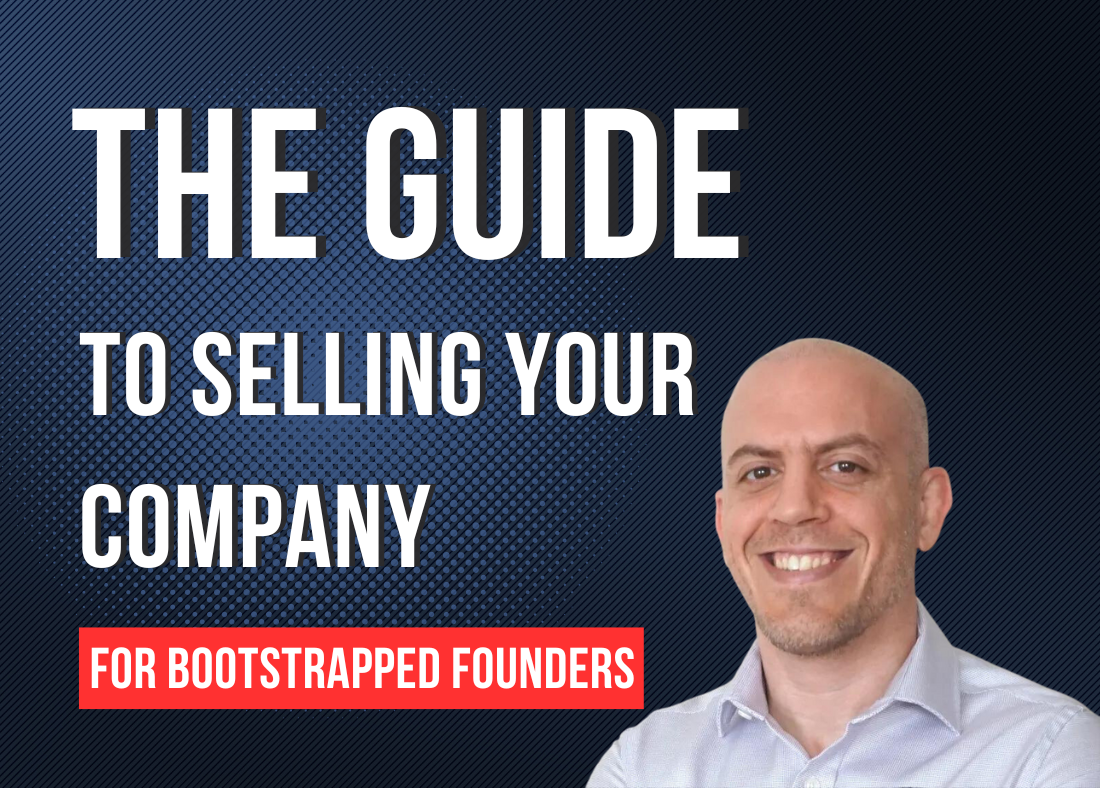There comes a time in the life of most successful software businesses when the opportunity to sell the business becomes available. This is especially true for income generating, subscription SaaS businesses, which are a prime investment for various acquirers.
2 years ago I started receiving inbound inquiries from various investors asking about a potential acquisition. Since then, I have taken over 40 calls with different private investors and private equity firms, and have had serious acquisition talks with several of them. Here’s what I learned:
The Various Flavors of Private Equity
Most people are familiar with Venture Capital (VC) firms, however there are many private equity firms that do not follow the VC investment model.
A VC firm is a private equity firm that invests in startup companies – companies aiming for hypergrowth, through the use of venture capital. Typically this happens in multiple investments rounds, with each round pushing the company just enough to get to the next funding round with the eventual goal of going public (IPO).
To support this, VCs typically acquire a minority equity, to leave enough for future funding rounds and to keep the founders motivated with their remaining stake in the business.
I previously wrote about why I don’t believe this model is a good fit for most tech businesses. And likewise, I believed it was not a good fit for my business – I had no aspirations of trying to build a “unicorn” tech company, and instead was aiming to build a profitable, sustainable business.
A non-VC private equity firm on the other hand, typically aims for a majority equity acquisition, where they effectively take control of the company. This can range from 100% full acquisition, to 75-80% majority acquisition where the founders keep some equity so they have incentive to stay on board and help grow the company.
PE firms look to invest in companies that are not a good fit for the VC model, having low to moderate growth, and aim to bring its in-house expertise and resources to improve performance, grow the company and either sell it eventually or use it as a cashflow generating asset.
Worth noting that some PE firms will have a VC arm, making VC like deals and a different arm acquiring companies.
Types of acquirers
As much as the PE model differs from the VC model, there are also different types of PE firms and other types of acquirers. The below is not an exhaustive list, but includes the most common ones:
Holding Companies
The most common format of private-equity acquisition is buying early stage companies, and growing it with the intention of selling it after it grows significantly. Many of those firms have in-house operational staff that streamlines many facets of the companies they purchase, and allows for the sharing of resources, though some just instill a new CEO and provide them with a budget to grow the company.
A majority of PE firms fall in this category, and in my experience dealing with them has been the most streamlined process of all the investor types I write about below. Those are professional investors with (typically) a significant history of acquiring companies, and thus have processes in place to progress a deal towards completion.
Strategic Buyers
Strategic buyers are typically companies in the same or a complimentary vertical, that have a synergy with the acquired company that is valued separately from just the potential financial gain of buying and selling the company as it grows in value.
One example is a large player in a specific vertical buying out a smaller player in order to consolidate their customer bases and brands to monopolize a segment of their vertical. Another example would be a payment processing company purchasing a SaaS business that process a large volume of payments, as they would be able to generate additional revenue from the payment volume.
Strategic buyers can often pay some of the highest premiums when acquiring companies, as they receive additional value compared to other investors.
Roll-ups
In general, the bigger the revenue an asset generates, the higher the multiples future acquirers would be willing to pay. A roll-up is a tactic that tries to cash in on that principle, by acquiring multiple companies that are either competitors or have strong synergies, in order to merge it into one bigger asset that is worth much more than the sum of its parts.
The other benefit of roll-ups is that because of the shared target market and often feature-sets between the assets that are rolled-up, you can often reduce payroll and other expenses by sharing resources inside the rolled-up entity.
As a roll-up is often a subset of a holding company, many of the same thoughts apply. However, there is something slightly off about mashing a bunch of competitors together, all with similar but slightly diverging products. While it makes sense from a business perspective, there are some cultural and product vision issues that could arise.
Private investors
While private equity firms typically have professionals managing the investment process on behalf of the investors (who are typically silent LPs in the firm), private investors invest their money directly into companies they would like to own. Since anyone with sufficient capital can purchase companies, the experience of dealing with private investors can vary significantly.
Because of the personal (and likely emotional) connection to the investment, my experience has been that that most private investors are looking for value and bargains – as they are putting their own money in, it’s harder for them to pay a premium compared to PE firms that have a much larger capital pool.
Search Funds
A search fund is somewhat of a strange beast to me – it is a fund in which a would-be entrepreneur raises funds first and then searches for a company to acquire. So instead of actually starting a company themselves and raising funds for that, they raise funds based on their alleged ability to take over an existing company and increase its value.
Some search funds are headed by seasoned entrepreneurs who just want to skip the initial phase of starting a company, but just as often are headed by recent MBA graduates who are well connected and are able to raise based on promise / sales skills alone.
As search funds are typically formed to invest in one company, similarly to private investors they are typically looking for value and bargains. My experience with search funds has been that its generally a waste of time talking to them, unless you are desperate to sell your company (and this is often what they are looking for).
Talking to Private Equity
If you run a software company, and especially a B2B SaaS company with any modicum of success, eventually you will start receiving Emails that read as follows:
Description for this block. Use this space for describing your block. Any text will do. Description for this block. You can use this space for describing your block.
Most of them will keep details intentionally vague, but some might specifically mention an acquisition / exit. To figure out what kind of company you are dealing with, and who is the person that reached out to you specifically, you should head on to the firm’s website and do some research.
You can learn quite a bit from a PE firm’s website (or lack of thereof). What kind of companies do they invest in? what is the size of the firm? What position is the person that reached out to you?
Though some of those website end up looking quite similar, if they look professional that’s not necessarily a bad thing. Some do have personality to it, which can give you an idea if they might be a good fit for you.
Many (or even most) of the inbound interest you’ll receive will be from analysts at those firms. Analysts are at the bottom of the totem pole at those firms, and their role is to do research to generate dealflow for the firm. It doesn’t mean that talking to them is a waste of time, but you should calibrate your expectations and the data you provide accordingly. Some of them are researching multiple companies in the same vertical, which could include your competitors.
Taking a call with private equity
As I mentioned earlier, I’ve taken over 40 calls with PE investors over the course of 2 years. It usually goes like this –
- Exchanging pleasantries
- The investor will give a short intro to their firm and what they’re looking for
- I’ll give my “story” – the origin story of starting the company and how we got to where we at
- Sharing some metrics I’m comfortable sharing
- If it seems like a potential fit, outlining the timeline to continue talking
This usually takes 30 minutes, though it can go on longer if we’re having a good connection.
The “story” segment became a pitch of sorts over time, as I learned how to optimize it to this audience. I talk about initial struggles, gaining deep vertical knowledge through customer development, reaching product-market-fit, more struggles (COVID, economy), getting on a strong growth trajectory, which leads into the present.
What I look for in the conversation is seeing if the investor understands what I’m talking about – are they asking relevant questions? are they adding their own input which makes sense? Some just fill up air and you can tell they have no real-world knowledge (fresh MBAs, no industry knowledge, no operational knowledge).
It’s also a test to see if I can see myself working with / for that person. In most acquisitions, the founder has to stay on for at least 6-12 months (often more) to transition and support the company as it changes ownership. As someone who started his own company to avoid working for other people, making sure that a potential “employer” is a good fit, is very important.
The next steps
I took calls for a long time without moving towards an acquisition, as I was not yet ready to sell the company. Initially, I started taking those as a curiosity to test the waters, after avoiding it for a while.
Once I was ready to sell, I already had a shortlist with 24 firms that I had good talks with and felt like they would be a potential fit. At this point I also engaged a sell-side broker firm to help with the process, and they brought their contacts with them as well.
The actual sale process is quite technical (going through bidding, LOIs and due-diligence) – I wrote about the sale process in more detail here.




